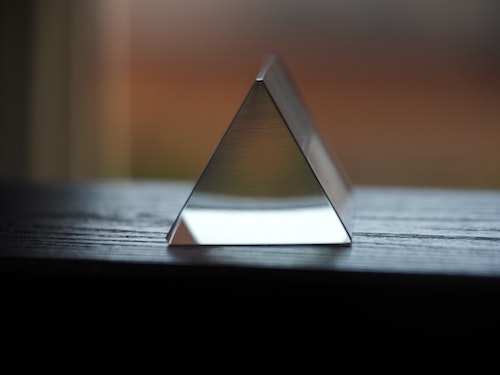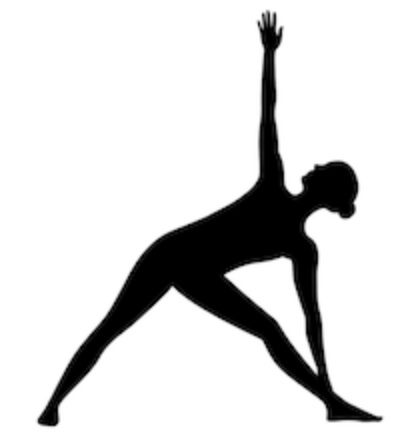How flexible is your body?
How flexible is your mind?
How flexible is your yoga practice?


What do you do when you get stuck?
Do you stick with your routine?
Or do you adapt?
It's a New year now but the calendar alone won't change the way you feel. To breathe new life into body and mind, you'll need to build a new foundation. You may need to become flexible in new places and draw upon new sources of strength.
Yoga can help you wake up your potential - or it can be one more place where you fall back on your habits.
What does your practice look like?
- Are you expanding your understanding - or just going through the motions?
- Are you filling in blind spots - or pushing through pain?
- Are you trying to do everything "correctly" - or exploring creatively and discovering new capacities?
Every yoga posture contains an entire universe. To create a dynamic shape, hold it, and enliven it with your breath is to discover new ways to relate to the world around you. Some shapes feel familiar and safe. Others bring you face-to-face with your fears.
Practice means showing up again and again. But it's only repetition if you leave your imagination behind.
And you don't have to do that!
Reimagining Asana:
Triangle - Connecting the Dots
Triangle pose turns your world on its head. It gives you no choice but to adopt a new perspective.
To find even footing below as you reach for the sky above requires skillful use of your feet, hips, eyes, and spine. Doing the same to the left and the right will highlight where you know yourself well - and where you don't.
Reimagining Asana: Triangle - Connecting the Dots is a 6-week Feldenkrais workshop designed to refresh your yoga practice through a multi-dimensional exploration of the world of Triangle.
As you form a more beautiful Triangle, you will also learn to:
- Free your neck & shoulders to support your head without strain
- Adjust the width of your base of support to find better balance and ease in your posture
- Strengthen the muscles of your pelvis and groin to lighten the load on your back
- Organize your feet & ankles for maximum ground support
- Open your hip joints for better rotation and balance
- Open your chest for a deeper breath
- Strengthen the connection of your spine and your limbs
- Train your vestibular sense to find comfort in unusual orientations
- Employ skillful counterbalance (the yin/yang of stability/mobility)
What makes this approach to yoga asana different:
- Using the asana to uncover structural biases in your skeleton, unconscious movement habits, and emotional blindspots
- Clear explanations of the relationship between the posture and the movements of your everyday life
- Non-goal oriented approach that makes space for you to find your own unique definition of the ideal
- Strategic use of improvisation and games to broaden your thinking about the posture
- Studying the posture in relation to principles of ideal human movement that apply anytime/anywhere
- Exploring the posture in multiple relationships with gravity to highlight the work of different muscle groups
- Learning to recognize and adjust for the emotional and/or psychological challenges in your movement practice
Course outline:
Class #1: Building a Better Base
Triangle is built on a wide base of support. Although you have no choice except to get shorter the more you spread your feet, that doesn’t mean your spine has to collapse. Discover what it means to lift up out of your legs - no matter how your feet are placed.
Class #2: Ankles at Different Angles
The triangle of support underneath your Triangle pose is built over feet pointed in different directions. It’s a unique demand for each ankle and a different pathway from the ground up through each hip joint. Strengthen your foundation by getting to know all of its angles.
Class #3: The Center of Your Triangle
Your pelvis moves your middle, both to find support over your legs and steer your spine through space. Tilting or turning doesn’t have to mean falling. But your hips must know what’s above and below in order to float. Explore the yin and yang of mobility and stability.
Class #4: Arms, Legs & Spine
Not every day do your hands and legs connect - or intersect. It’s not that they can’t reach, but if your spine stays in one neighborhood, they’re limited by where they reach from. But if you travel the city by driving from your spine, your hands go wherever they wish.
Class #5: Waking Up Your Back
It’s one thing to have a long spine standing upright. It’s another thing altogether when you lean sideways and twist. The shape you’ve trained by squinting at your cell phone doesn’t help in this situation. Learn to wake up the powerful extensor muscles of your back.
Class #6: Expanding Wing Span
Powerful arms are rooted in a powerful spine and a flexible chest. When the arms are outstretched, the distance between your middle fingertips is roughly equal to the distance from the crown of your head to the soles of your feet. Teach your arms to stand tall.
Class #7: Orienting in a Triangular Universe
When exploring complex asymmetries, it’s easy to lose track of where you are in space. In Triangle pose, your head doesn’t sit above your hips and your eyes don’t sit on the horizon. It’s not what your inner ear is most accustomed to doing. But it can be trained.
Class #8: The Central Axis of Your Triangle
Your ability to lengthen is stifled by internal resistance that grows in the soils of your history and your habits. But you can retrain without strain by encouraging cooperation, tempered with patience and compassion. Make friends with your insides to widen your wingspan.
Class #9: Diagonal Triangles
There’s no anatomical path from your hip joint to the opposite shoulder. But this diagonal connection is essential to your Triangle - not to mention walking, throwing a ball, and so many other things you do. Light up this line on your body map to create new possibilities.
Class #10: Triangular Counterbalance
Your outstretched arms make a single limb, passing through your chest. Between your scapulas is the skeleton key that unlocks communication with the ground below your feet. You'll also discover a "hidden twist" as you open a new doorway into Triangle.
Class #11: Triangles on All Fours
You had to learn to crawl before you could walk. Perhaps a baby Triangle also starts on all fours before learning to stand on its feet. Travel back in time to revisit the early developmental stages of this asana. Then teach your Triangle to walk.
Class #12: Inner & Outer Triangles
Your limbs emerge from your spine like your fingers from your hand. You build the shape in your mind, then express it with your body. The world is all around you. You can touch it, see it, and feel it and it touches, feels and sees you too. Let your Triangle express itself.
THIS IS A SELF-PACED ONLINE COURSE
COST: $165
Check out what folks have said about previous Reimagining Asana programs:
"I've been dealing with problems with my hamstring the whole time. Downward Dog has been causing me a lot of challenges in yoga class. The work where we used chairs has been very helpful. Working with the wall has been helpful. And I think it's been helpful for me in general, when I have been in yoga class, to find different ways of distributing my weight on my pelvis.
I'm just thinking with a bigger variety of possibilities."
"For years, I've always approached Tree with trepidation. I've always thought, oh gosh, am I gonna be able to do it today? And how long can I do it? So automatically I've set myself up for usually a negative experience. This class has enabled me to go into it joyfully. Just much more fun period. That's a big thing for me. Wonderful!"
"For me, it's been about an increasing awareness of the differentiation between the pelvis and the femur heads. I brought that awareness into walking, which is turning into a big theme for me as I get older. Especially the class we did about the space of where the femur head was in the socket. And in walking, I can visualize that much more which has been great.
"I was doing a circuit training class yesterday and jumping jacks was one of the exercises. I have a chronic left shoulder problem so I have to be careful. Then I remembered the lesson about extending the finger to bring in different muscles up through the attachment of the shoulder to the chest wall. And I tried extending my finger and thumb and the pain went away.
You know, you have these roadblocks from your injuries or age and all of a sudden, you find a little tweak, just a minor little tweak in how you engage muscle patterns and it solves real problems. Thanks for that enlightenment!"
"You’re a really responsive and interactive teacher. Nothing rote or same old same old. Good for you! It’s a real pleasure."
"Very creative, unlike anything I've done before. Thank you very much!"
"I've really enjoyed it. It has informed my yoga a lot. So I take a lot away with me, and I look forward to seeing you in the next next round."